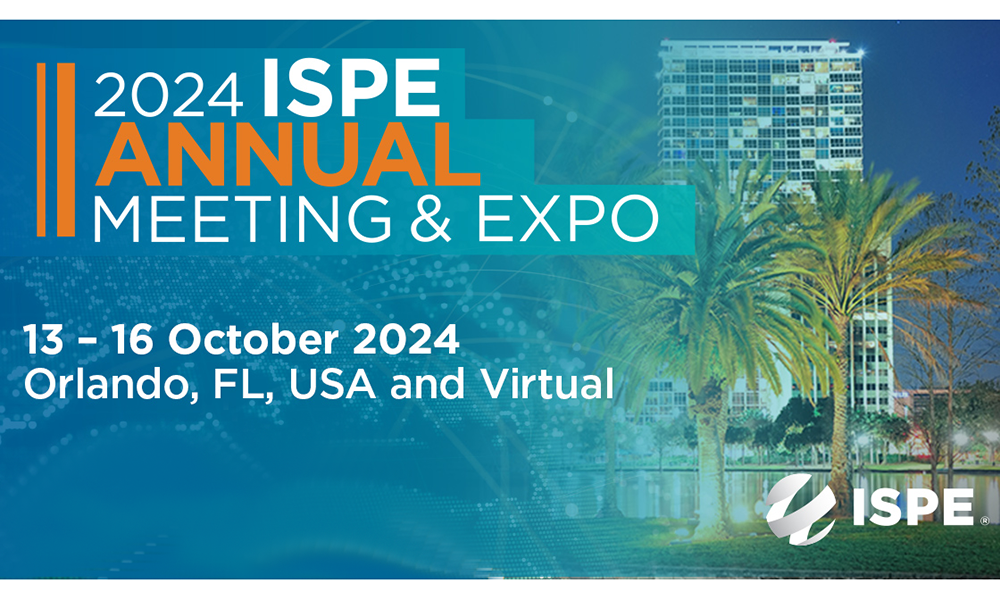ISPE Members Help Prepare Industry to Implement ICH Q9 Revision

The International Council for Harmonisation of Technical Requirements for Pharmaceuticals for Human Use (ICH)’s Quality Risk Management (QRM) guidance was signed off by ICH in November 2005 as one of a suite of guidelines alongside Q8, Pharmaceutical Development, Q10, Pharmaceutical Quality System and later, Q11, Development and Manufacture of Drug Substances, which describe the science- and risk-based approach to drug product and drug substance development and manufacturing during the product lifecycle.
ICH Q9 QRM principles and framework were instrumental in introducing QRM approaches to both industry and regulators. However, the benefits of QRM, as envisaged by ICH Q9, have not yet been fully realized and were summarized as the Perceived Problem in a 2020 Concept Paper.
There are four areas for improvement with the current application of QRM:
- High levels of subjectivity in risk assessments and in QRM outputs - the reasons for this can include highly subjective risk scoring methods and differences in how risks are assessed and how hazards, risk, and harms are perceived by different stakeholders. This can lead to varying levels of effectiveness in the management of risks. While subjectivity cannot be completely eliminated from risk assessment and QRM activities, it may be controlled using well recognised strategies, including addressing bias and behavioural factors.
- Product availability risks - ICH Q9 is not a supply chain guideline, but quality/manufacturing issues that impact the supply chain and product availability can present risks to patients, and management of these risks is important. ICH Q9 already addresses product availability issues, as its definition of harm includes damage ‘from a loss of product availability’. Addressing lifecycle risks to manufacturing reliability and quality assurance is the foundation for supply predictability. An increased emphasis on this would be beneficial, whilst recognising the need for flexibility in how much formality is applied in relation to risk-based drug shortage prevention and mitigation activities.
- Lack of understanding as to what constitutes formality in QRM work - this area has the potential to be further developed for deeper understanding to lead to a more effective application of QRM principles and better execution of QRM activities. There has been significant confusion and uncertainty in the industry and among regulators as to what constitutes formality in QRM work, and how generally to interpret this principle. It would be useful to clarify what is expected in terms of formality and that there is flexibility in how much formality may be applied in relation to QRM activities, while emphasizing that robust risk management should always be the overarching goal of QRM.
- Lack of clarity on risk-based decision-making - while there are references in ICH Q9 to decision-making, there is a lack of clarity on what good risk-based decision making actually means, how QRM may improve decision-making, or how risk-based decisions might be achieved. There is a breadth of peer-reviewed research in this area, but the level of visibility (and uptake) of that research within the pharmaceutical industry may be improved.
A targeted revision to ICH Q9, supported by additional training materials, could provide important additional guidance in these areas, whilst also recognising the role of other ICH quality guidelines.
Other suggested points to be addressed were proposed by the ICH Quality Discussion Group (QDG), namely:
- This work could provide additional clarity on the expectations relating to keeping risk assessments current and on the implementation of risk review activities based on lifecycle manufacturing performance and quality feedback.
- A targeted revision should be considered to Chapter 4.3 to change ‘risk identification’ to ‘hazard identification’, and to update Figure 1 of the guideline to reflect this. This change will align with the expectation to identify hazards relevant to patients when evaluating risks; moreover, it may improve how hazards are perceived and assessed.
There are other potential issues that might benefit from the revision of this guideline, such as:
- Digitisation
- Emerging technologies
The potential benefits of a revised ICH Q9 are to help conserve regulatory and industry resources, e.g., by addressing the above areas more explicitly, it could lead to more effective and science–based control strategies (ICH Q8/Q11) among manufacturers, improving manufacturing consistency, lowering costs, and reducing the likelihood of quality defects, recalls, and medicine shortages. If manufacturing and supply chain processes are designed and validated in a manner that adequately reflects the QRM principles, it is reasonable to expect that such problems could decrease. More detail of the anticipated benefits of the proposed revision of ICH Q9 are given in Annex 1 of the Concept Paper.
All parts of the pharmaceutical industry should benefit from the proposed revision.
Process
The topic was endorsed by the ICH Assembly in November 2019 and the Concept Paper was endorsed by the Management Committee in November 2020. An Expert Working Group (EWG) was established consisting of representatives from Founding Regulatory and Industry members (Europe, Japan and US) as well as representatives from other regulatory members, standing observers and industry members and affected organizations. A rapporteur was appointed from European Commission with a regulatory chair from the US FDA. The EWG produced a Step 2b draft document, which was endorsed in November 2021 and is in the process of completing public consultation.
ISPE Establishes an ICH Q9 Revision Response Team
In response to requests from the ICH Q9 (R1) EWG in spring 2021 for some case studies and potential training material, ISPE established a team of ISPE members led by John Groskoph, Pfizer. Four case studies were provided to the EWG in September 2021. These case studies are fictitious, however, are all based on real examples known by members of the ISPE Q9 Revision Response Team and are:
- QRM applied to new product development
- QRM applied to a clinical facility used for launch
- QRM applied to drug availability
- QRM applied to equipment and supplier selection
ISPE does have access to many other examples of application of quality risk management and offered to develop further the examples listed above or provide additional examples if there is a gap or necessity.
This team also led the ISPE’s comments on the Step 2 draft document which were proved via the European Medicines Agency (EMA) in March 2022. These comments have been included along with other stakeholder’s comments in EMA’s overview of comments received on ICH guideline Q9 (R1). These consolidated comments will be sent to the ICH Q9(R1) EWG for consideration in the context of Step 3 of the ICH process.
Summary of ISPE Comments
Subjectivity
A separate section is recommended on "Reduction of Subjectivity", following "Formality" and before "Risk-based Decision Making". This section should describe steps to reduce subjectivity and increase objectivity during risk assessment and, separately, when taking decisions.
Examples could be:
- Inclusion of appropriate range of expertise
- Level of experience of SMEs
- Availability and access to relevant knowledge
- Ability to place risk management outcomes into perspective with similar situations
- Use of trained, risk facilitators in the risk management process
A well-designed problem statement can mitigate subjectivity. Conversely, a poorly designed problem statement can inject subjectivity into the QRM process.
Bias may be minimised by ensuring representation from appropriate team members, a risk assessment facilitation process that promotes individual unbiased inputs and an ultimate decision maker that evaluates all key inputs and makes a final resolution.
Use of training examples would be appropriate.
Product availability risks
ISPE recommends that the Introduction is restructured to emphasise that QRM and is a fundamental enabler to assure a quality product is available to the patient by:
- Using a science- and risk-based approach to product and process development as in ICH Q8 and Q11
- Using Good Engineering Practices for pharmaceutical installations.
- Applying in the management of the product lifecycle as in ICH Q12
- Applied to the Pharmaceutical Quality System (PQS)s as in ICH Q10
- Applied to product availability as in this revision
We recommend that these concepts are stated clearly at the start of the Introduction perhaps instead of reference to application of risk management to other industries
The protection of the patient by managing the risk to quality and availability, when availability risks arise from quality/manufacturing issues, should be considered of prime importance. Risks also arise, however, from different regulatory requirements between agencies as discussed in the article, Toward a Single Global Control Strategy: Industry Study published in Pharmaceutical Engineering magazine.
Formality
One of the stated objectives of ICH Q9 R1 is to expand on the concept of "formality" in Quality Risk Management. The Principles of Quality Risk Management (section 3) correctly states that "the level of effort, formality and documentation of the QRM process should be commensurate with the level of risk". Formality in Quality Risk Management (section 5.1) also correctly states that QRM is not binary (formal vs informal) but rather a continuum ranging from low to high. However, when the characteristics of risk assessments are described, the impression of a binary system is given. High levels of formality are described as having a cross-functional team, use various QRM tools with all steps of the QRM process explicitly performed. By contrast the characteristics of lower formality are implied to always be imbedded and documented in other elements of the Quality System.
It is also recommended that the language giving the impression of less formal risk management exercises being already documented in the PQS is changed to describe what should occur in less formal risk management exercises and not what may not occur. For example, lower levels of formality could be associated with decisions being taken and documented by a small group of decision makers who have a high degree of expertise.
ISPE’s Q9 Revision Response Team considers that all Quality Risk Management exercises begin with the most informal of activities; that of asking a question. Questions are described in section 4.3 Risk Assessment as "What might go wrong?" Additional, "What is the likelihood that it will go wrong?" These questions may be asked by any colleague at any time whenever something is seen that is unusual or unexpected. It may be determined quickly (by trained personnel) that, in fact, nothing can go wrong, or it is extremely unlikely to go wrong, and the process or activities is allowed to continue. This most basic and informal type of Risk Assessment may not even be documented. However, it may alternatively be determined that something might go wrong and that a level of increased formality is appropriate. This may trigger the steps of a defined process within the Quality System, or it may trigger the initiation of a significantly more formal QRM exercise.
A Formal Quality Risk Management exercise forms the upper extreme of the formality continuum. The ISPE Q9 Task force believes that the fundamental elements of a successful Formal Quality Risk Management exercise include:
- A cross-functional team of experienced subject matter experts to reduce the level of subjectivity among the team,
- The use of a well-crafted problem statement (or risk question) which guides to team without bias and
- A defined decision-making process or individual. While these elements are included in the current Q9 text, they are spread out in different sections and therefore lose a level of impact. For example, the problem statement is described in section 4.2. Elements of higher levels of formality are described in section 5.1. Decision Making has its own section in section 5.2.
Decision-making
Many of the recommendations relating to decision-making are given in the above sections, particularly in the Formality sections. As part of the QRM Initiating Step, consideration should be given to adding to the steps that might be included, such as identifying:
- The level of formality to be applied
- Decision makers and/or decision-making process.
New Technology
The evaluation and use of new technologies including for example new equipment, facilities (pod, modular), modalities, processes, digitization, and more use of advanced computerized systems are typically evaluated and implemented to improve efficiency, enhance analytical accuracy, reduce process variability, etc. As such, they are intended to reduce risk to the product i.e., patient, process and overall supply chain. The ICH Q9 ISPE Task Team agrees that the application of the QRM process is entirely appropriate when evaluating the use of various new technologies. However, the use of new technologies is given a somewhat negative connotation in the Introduction of the document. Specifically, the use of new technologies is described as "presenting certain challenges". This is inconsistent with language in the draft where new technologies are more appropriately described as valuable tools that can reduce risk.
It is recommended that the language throughout the document is aligned to describe the positive risk reducing attributes of new technologies.
Terminology
There are many terms that should now be included in the glossary or definitions.
Training
ISPE strongly supports the use of new training material to exemplify the strengthened revision to ICH Q9 as indicated in the Concept Paper.
ISPE accepts the following examples of QRM training are key:
- Subjectivity
- Product Availability
- Formality
- Decision-making
- New Technology (Digital)
- New Drug Modality development and administration
Other examples could include:
- Equipment Selection
- Process Development
- Clinical launch facility
- Process Risk Assessment (PRA)
- Contamination Control Strategy (CCS)
- Informal Risk Assessment associated with a PQS element
- Informal Risk Assessment associated with a non PQS element e.g., equipment comparability
- Outline of a training package for Risk Assessment facilitation.
Application of QRM by Regulators
ISPE recommends that consideration is given to more examples being created where quality risk management is applied by regulators. For example:
- During inspections,
- Harmonisation of the Classification of Deficiencies, and in assessment,
- Harmonized approach to risk between regulators during implementation of ICH Q12 and application of risk management to provide a common, Global control strategy - see article on Toward a Single Global Control Strategy: Industry Study
- Consider using examples of risk-based decision-making during dossier review.
ISPE will present an Expert Xchange: Regulatory Summit on the ICH Q9 revision on 9 June 2022 in which attendees will engage in interactive breakout discussions focused on the key focus areas of the ICH Q9 Revision: Subjectivity, Product Availability, Formality, Decision-making, Digitization and New Technology/Modalities. Members of the ICH Q9(R) Expert Working Group will participate in the panel discussions.



